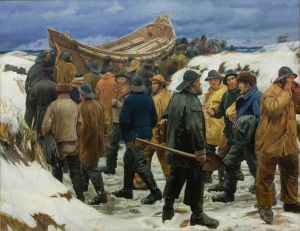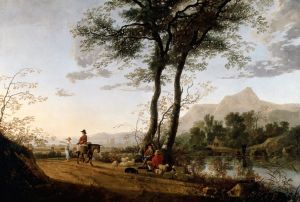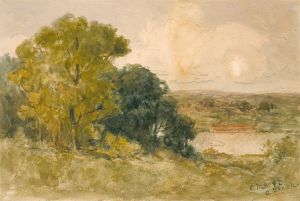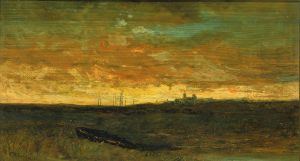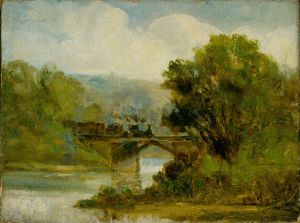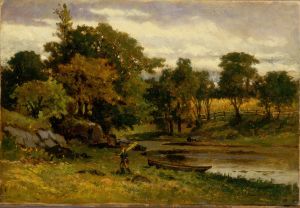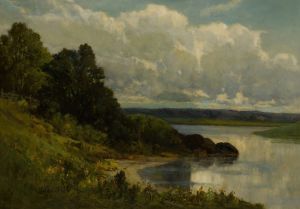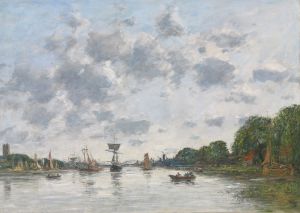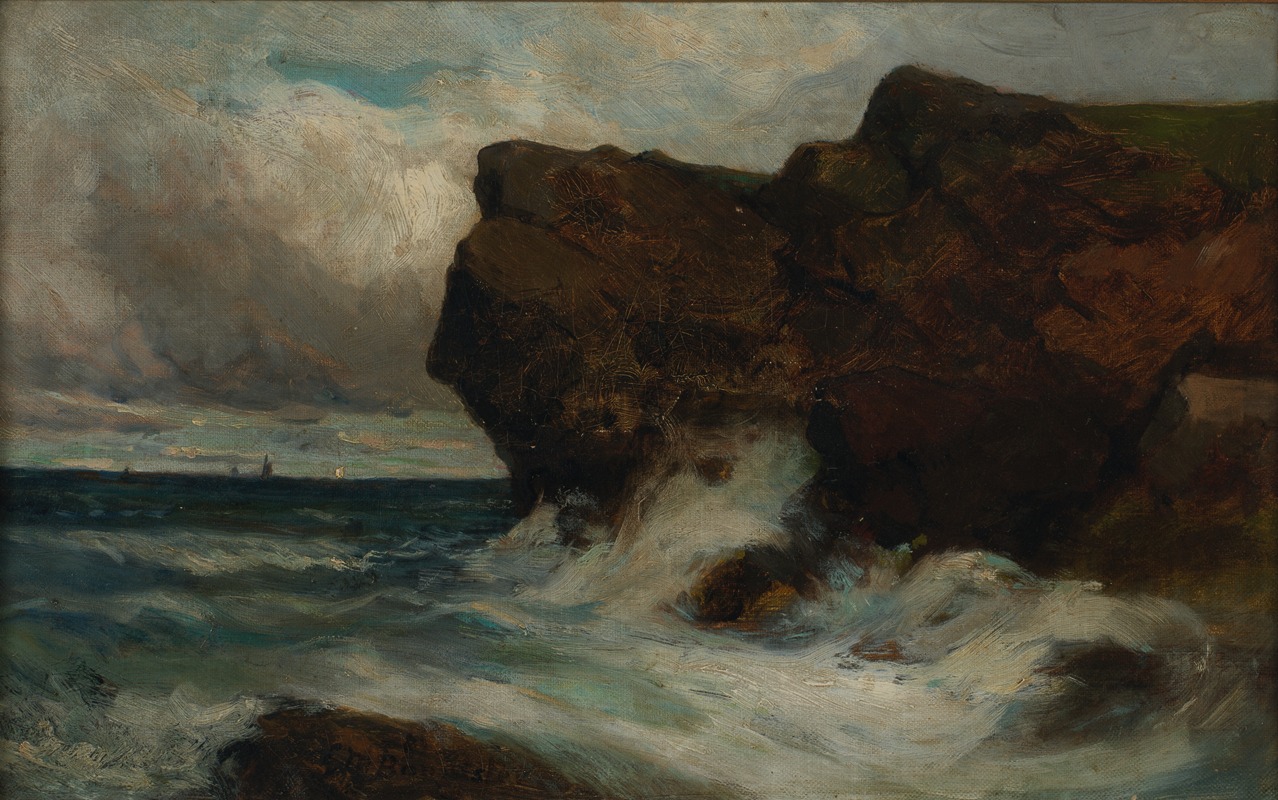
Ocean Cliffs
A hand-painted replica of Edward Mitchell Bannister’s masterpiece Ocean Cliffs, meticulously crafted by professional artists to capture the true essence of the original. Each piece is created with museum-quality canvas and rare mineral pigments, carefully painted by experienced artists with delicate brushstrokes and rich, layered colors to perfectly recreate the texture of the original artwork. Unlike machine-printed reproductions, this hand-painted version brings the painting to life, infused with the artist’s emotions and skill in every stroke. Whether for personal collection or home decoration, it instantly elevates the artistic atmosphere of any space.
Edward Mitchell Bannister was a prominent African American artist known for his contributions to the American art scene in the 19th century. Born in 1828 in St. Andrews, New Brunswick, Canada, Bannister later moved to the United States, where he became an influential figure in the art community, particularly in Providence, Rhode Island. He was one of the few African American artists of his time to gain significant recognition.
"Ocean Cliffs" is one of Bannister's notable works, showcasing his adept skill in landscape painting. Bannister was heavily influenced by the Barbizon School, a movement that emphasized naturalism and the depiction of rural landscapes. This influence is evident in "Ocean Cliffs," where Bannister employs a soft, atmospheric approach to capture the serene beauty of the natural world.
The painting features a coastal scene, with rugged cliffs rising majestically from the ocean. Bannister's use of color and light is particularly striking, as he captures the subtle interplay of sunlight and shadow on the rocky surfaces and the surrounding water. His brushwork is both delicate and expressive, conveying a sense of tranquility and timelessness. The composition is carefully balanced, drawing the viewer's eye across the canvas and inviting them to linger on the details of the landscape.
Bannister's work often reflects his deep appreciation for nature and his desire to convey its beauty and majesty. "Ocean Cliffs" is no exception, as it embodies the artist's commitment to portraying the natural world with sensitivity and respect. Despite the challenges he faced as an African American artist in a predominantly white art world, Bannister remained dedicated to his craft and continued to produce works that resonated with audiences.
Throughout his career, Bannister received several accolades for his work. One of his most significant achievements was winning a bronze medal at the 1876 Philadelphia Centennial Exposition for his painting "Under the Oaks." This recognition was a testament to his talent and perseverance in an era when racial discrimination was rampant.
Bannister was also a founding member of the Providence Art Club, one of the oldest art clubs in the United States. His involvement in the club and the broader art community helped pave the way for future generations of African American artists. Bannister's legacy is one of resilience and artistic excellence, and his works continue to be celebrated for their beauty and historical significance.
"Ocean Cliffs" remains an important part of Bannister's oeuvre, exemplifying his mastery of landscape painting and his ability to capture the essence of the natural world. Today, Bannister's paintings are held in various collections, and his contributions to American art are recognized and appreciated by art historians and enthusiasts alike.






